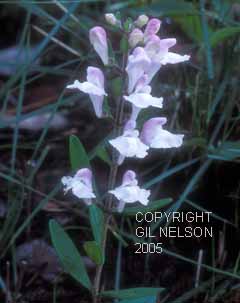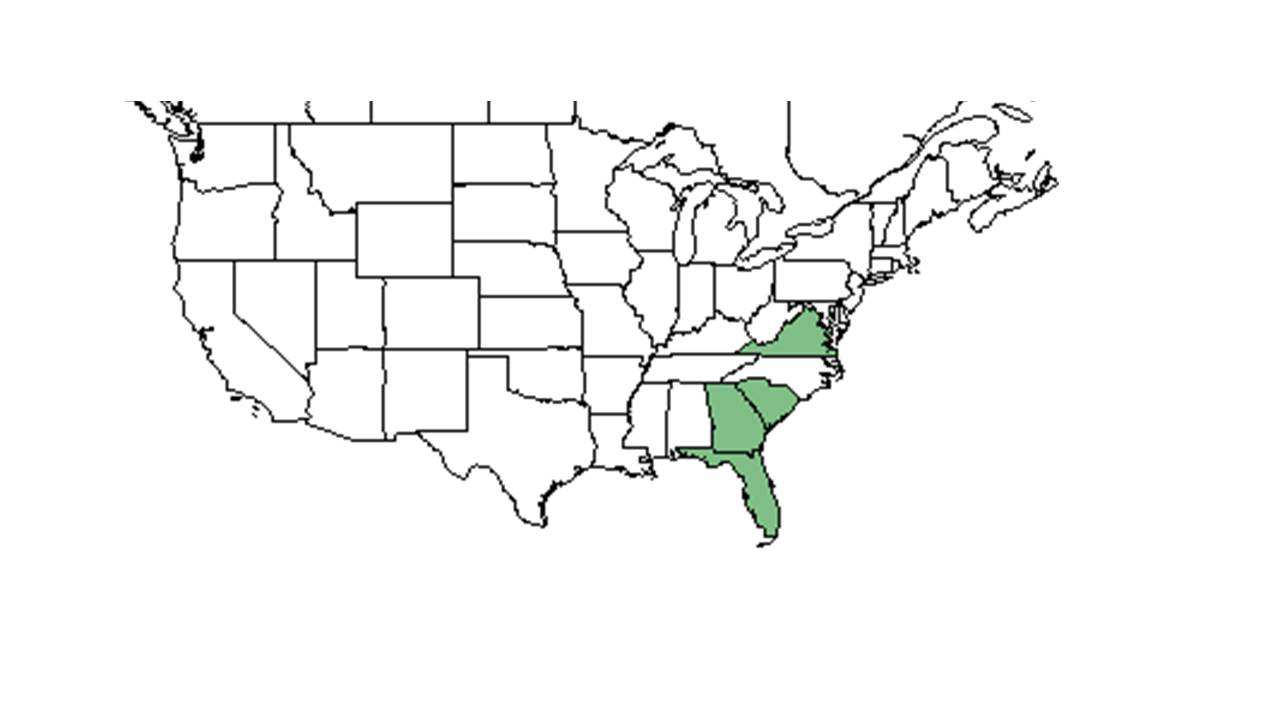Scutellaria multiglandulosa
| Scutellaria multiglandulosa | |
|---|---|

| |
| Photo taken by Gil Nelson | |
| Scientific classification | |
| Kingdom: | Plantae |
| Division: | Magnoliophyta – Flowering plants |
| Class: | Magnoliopsida – Dicotyledons |
| Order: | Lamiales |
| Family: | Lamiaceae ⁄ Labiatae |
| Genus: | Scutellaria |
| Species: | S. multiglandulosa |
| Binomial name | |
| Scutellaria multiglandulosa (Kearney) Small ex Harper | |

| |
| Natural range of Scutellaria multiglandulosa from USDA NRCS Plants Database. | |
Common name: Small's skullcap
Contents
Taxonomic notes
Synonym: Scutellaria integrifolia Linnaeus var. multiglandulosa Kearney.[1]
Description
This description in Radford (1964) came from the synonym listed after the description of S. integrifolia var. integrifolia. "Perennial herbs with quadrangular, erect to ascending stems; stolons absent, or present and underground. Leaves sessile or petiolate. Racemes bracteate, often paniculate. Calyx zygomorphic, 2-lobed, the upper lobe crested, very small in flower and enlarging in fruit; corolla zygomorphic , upper lip galeate, 3-lobed, lower lip unlobed, usually white in the throat. The blue-flowered species occasionally have white flowered forms. Stamens 4, exserted; stigma 2-parted. Mericarps dark brown to black, closely set with tubercles or papillae in somewhat concentric rings, rounded, often somewhat flattened."[2]
"Plant not stoloniferous, forming clumps of 1-several stems. Stems erect, 1.5-8 dm tall, simple or branched above, pubescent. Lowest leaves triangular-ovate, 0.7-3.5 cm long, 0.2-2 cm wide, obtuse or acute, crenate, base truncate to widely cuneate; petioles 0.8-2.5 cm long. Upper leaves lanceolate to narrowly elliptic, 2.5-6 cm long, acute or obtuse, entire to remotely crenate, base cuneate to attenuate; petioles 0-10 mm long, mostly obscured by blade tissue. Racemes 1-5 rarely more, terminating the stems, 0.3-2 dm long. Lowest bracts often leafy, reduced rapidly upward. Calyx 2.5-3 mm long in flower, 6-8 mm in fruit; corolla blue to violet, 1.3-2.5 cm long. Mericarps dark brown, tuberculate, the tubercles with broad apices, 1-1.5 mm long."[2]
"Stems canescent."[2]
Distribution
Ecology
Habitat
In the Coastal Plain in Florida, S. multiglandulosa can be found in open pine-turkey oak flatwoods, recently burned scrubs, pine flatwoods, longleaf pine-turkey oak hills, sandridges, upland pine-oak woodlands, open oak-hickory, longleaf pine-wiregrass ridges, annually burned savannas, and longleaf pine forests.[3] It can also be found in roadside depressions, hiking trails in pine-oak woodlands, railroad gravel, cut and burned longleaf pine flatwoods, road banks, powerline corridors, fallow quail food patches, and cleared longleaf pine-scrub oaks.[3] Scutellaria multiglandulosais an indicator species for the North Florida Subxeric Sandhills community type as described in Carr et al. (2010).[4] A study exploring longleaf pine patch dynamics found S. multiglandulosa to be most strongly represented within longleaf pine gaps and under patches of longleaf that are up to 50 years of age.[5]
Soils include loamy sand, loamy soil, gravel and sandy soil.[3]
Associated species include Baptisia laceolata, Eupatorium capillifolium, Rubus cuneifoloum, Quercus geminata, Q. incana, Q. hemisphaerica, Sericocarpus tortifolius, Smilax auriculata, Polypremum procumbens, Serenoa repens, Rhus copallina, Helianthemum, Penstemon australis, Stylodon, Coreopsis, poison oak, and braken fern.[3]
Phenology
This species has been observed to flower from April to May, as well as in September.[6] Fruiting has been observed in April through September.[3]
Fire ecology
Populations of Scutellaria multiglandulosa have been known to persist through repeated annual burns.[7][8]
Conservation, cultivation, and restoration
Cultural use
Photo Gallery
References and notes
- ↑ Weakley, A.S. 2015. Flora of the southern and mid-atlantic states. Working Draf of 21 May 2015. University of North Carolina at Chapel Hill, Chapel Hill, North Carolina.
- ↑ 2.0 2.1 2.2 Radford, Albert E., Harry E. Ahles, and C. Ritchie Bell. Manual of the Vascular Flora of the Carolinas. 1964, 1968. The University of North Carolina Press. 902. Print.
- ↑ 3.0 3.1 3.2 3.3 3.4 Florida State University Robert K. Godfrey Herbarium database. URL: http://herbarium.bio.fsu.edu. Last accessed: July 2015. Collectors: Loran C. Anderson, Robert Kral, Robert K. Godfrey, R. D. Houk, D. B. Ward, Rodie White, Walter Kittredge, Roy Komarek. States and Counties: Florida: Citrus, Dixie, Gadsden, Jefferson, Lafayette, Leon, Levy, Madison, Nassau, Taylor, Wakulla. Georgia: Grady. Compiled by Tall Timbers Research Station and Land Conservancy.
- ↑ Carr, S.C., K.M. Robertson, and R.K. Peet. 2010. A vegetation classification of fire-dependent pinelands of Florida. Castanea 75:153-189.
- ↑ Mugnani et al. (2019). “Longleaf Pine Patch Dynamics Influence Ground-Layer Vegetation in Old-Growth Pine Savanna”.
- ↑ Nelson, G. PanFlora: Plant data for the eastern United States with emphasis on the Southeastern Coastal Plains, Florida, and the Florida Panhandle. www.gilnelson.com/PanFlora/ Accessed: 19 MAY 2021
- ↑ Robertson, K.M. Unpublished data collected from Pebble Hill Fire Plots, Pebble Hill Plantation, Thomasville, Georgia.
- ↑ Platt, W.J., R. Carter, G. Nelson, W. Baker, S. Hermann, J. Kane, L. Anderson, M. Smith, K. Robertson. 2021. Unpublished species list of Wade Tract old-growth longleaf pine savanna, Thomasville, Georgia.